Leema Acoustics Hydra II Anniversary
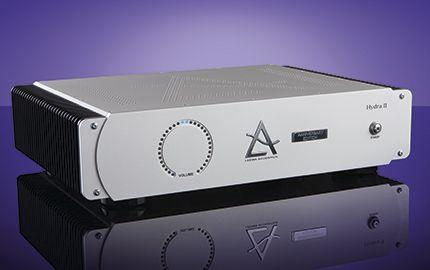
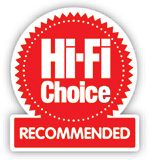 This new ‘Anniversary Edition’ of Leema’s well-regarded Hydra II power amplifier marks 10 years since the original amp made its debut. Company co-founder Lee Taylor has sought to improve and update the design, seeing what extra magic could be achieved with new, modern components and approaches, without changing the qualities reached a decade ago.
This new ‘Anniversary Edition’ of Leema’s well-regarded Hydra II power amplifier marks 10 years since the original amp made its debut. Company co-founder Lee Taylor has sought to improve and update the design, seeing what extra magic could be achieved with new, modern components and approaches, without changing the qualities reached a decade ago.
The Hydra II Anniversary Edition is an intelligent and flexible stereo power amplifier that can also be bridged for use as a monoblock, should you lust for even more power. Rated at 148W power output per channel into 8ohm, it may not appear overly muscular but it is claimed to tolerate even the most recalcitrant of loudspeakers. The dual-mono design uses two large toroidal power transformers – one for each channel – together with a separate, discrete transformer for the control circuitry. Leema claims its design seeks to marry a highly refined, low impedance output stage with very strong current delivery to ensure a vice-like grip and precise control of loudspeakers, even at very high levels.
The silky, machined fascia is subtly sculpted, hosting a ring of blue LEDs and a standby/power button flanking a simple chrome-plated Leema logo and Anniversary Edition badge. The matching top plate is also substantial and drilled with air vents in the shape of the Leema logo while the sides of the amplifier sport meaty cooling fins, seeming to promise some warm-blooded action.
Around the back, any simplicity of the front aesthetic is counterpointed by a complex array of connectivity. Primary input is via single, balanced XLR or unbalanced RCA selectable by a small push button just below the level of the back plate. Likewise, a similar, secreted button needs to be selected to instruct the amp to be in regular stereo mode or become bridged as a single-channel monoblock. These switches are a tad fiddly, but cannot be depressed by accident once set and powered up. Conversely, small, three-position toggle switches also need to be correctly set to confirm two-channel or left or right monoblock usage and these could easily be jogged by accident. A further toggle switch also needs to be set to confirm whether the unit is to be used in a surround capacity, fixed gain or to be controlled by Leema’s proprietary LIPS (Leema Intelligent Protocol System) communication system with other compatible Leema products via a single XLR or 3.5mm connection.
Further RCA points enable pre out, bi-amp out and multi-channel inputs, and the busy rear panel is completed with an IEC power input and sturdy speaker binding points that accept all common terminations with guidance on how they should be used in a monoblock configuration.
I connect up a matching Leema Libra preamp/DAC using Chord Company Epic analogue interconnects and activate the LIPS connection via a directional, 3.5mm jack cable supplied. Sources are a Shanling CD-T100 HDCD player and Garrard 401 turntable with Timestep T-01MC phono stage (HFC 371) connected via Black Rhodium Sonata VS-1 interconnects (HFC 398). Connection to Cadence Arca speakers is via Black Rhodium Foxtrot loudspeaker cables (HFC 412). I triple check all amp configurations before power up and switch on. It’s important to note that any further set-up adjustments need to be done with the power fully unplugged to take effect.
Sound quality
The Hydra II benefits from a lengthy run-in over four days before any critical listening takes place. Spinning Fight For Your Mind by Ben Harper on vinyl, the opening funky bass groove is deep and solid with superb speed and definition. It’s easy to imagine a dedicated power amp giving more bass weight, but here it’s the control that stands out. The bass riff sounds like an articulate lead instrument played with human panache, rather than just deep, bubbling tones somewhere in the background. Likewise, a tight snare drum rings out like gunshots, with extra bite and faster recovery than I’m used to, while sparkling jingle bells sweetly ring across a wide soundstage. Each of these qualities in isolation would be great, but it’s their marriage that’s so notable. And right there is the pitch for dedicated power amplification. Often, solid-state amplification can excel in communicating one thing at a time well, with a notional spotlight moving between instruments, but here the seemingly unburstable power reserves render the entire soundscape as a single, far more compelling whole image. Harper’s vocals join the mix and the voice is depicted beautifully. As before, it is not power that’s decisive, rather that the amp’s refinement enables tiny, emotive inflections to stand out, but without graininess, unsullied by low-level distortion or noise.
I experiment by swapping the Leema Libra preamp/DAC for a modest but transparent Hifi Hangar preamp (HFC 389) to ascertain the effect on sound quality. To do this I unplug and reconfigure the power amp to have fixed gain and adjust volume manually. Playing the same track confirms the majority of the speaker control and refinement is still present, so this is a classy power amp in its own right. Bass is just a little lighter, revealing that the LIPS connection is potentially weaving some extra magic, optimising the signal and levels of gain balanced between Leema components. If you are considering this new power amp, try to audition it with a matching Leema source or pre to hear what extra it can achieve. I swap back to the Leema Libra preamp/DAC and play The Grid on CD from Koyaanisqatsi by Philip Glass. The cleanliness and apparent absence of distortion encourages me to inch the volume up and soon the dynamic, revolving arpeggios and haunting organ drones fill my listening room. If anything, this amp seems to get better with volume, entering a kind of power band that just lets music flow unfettered.
Fast, pulsing bass notes have real depth and far greater definition than I expect, each with a leading edge and decay. The choir soars above the mesmerising rhythms, injecting extra richness and depth. The voices have vivid detail yet natural warmth that is almost valve-like in its unforced fluidity. Yet whatever the complexity, the Hydra II remains absolutely unflappable. Lesser power amps miss some of the detail or fail to portray the whole convincingly, but this one manages to nail them both.
I change mood by playing Goodbyes by Jorja Smith on CD. Her voice is beautifully textured and sweet and the acoustic guitar plucks and slaps fix the performance in an intimate, but highly stable, three-dimensional soundscape. Smith’s expressive vocals have a delicious mix of detailed rasp and natural warmth that could fool me into thinking I’m listening to a delicate triode valve amp rather than a solid-state bruiser. Here the virtues of a talented power amp show that uncompromised signal integrity combined with plenty of current delivery can reveal additional, subtle, micro sound textures that truly place instruments and their subliminal cadence in a believable acoustic space. The lyrical lead vocal is well projected and rounded in front of the loudspeakers and large swings in dynamics, colour and tone ebb and flow effortlessly.
Conclusion
At first glance this might appear to be something of an artisan, hand-built powerhouse of single-minded purpose with some fiddly switchgear, but beneath the understated looks and fine machining it is a seriously intelligent and highly flexible tool. Sonically it exudes poise and refinement, revealing significant new musical insights that only come from sophisticated and sensitive signal handling. At first, this refinement can seem at odds with power duties and one somehow expects more fireworks, but the longer I listen the more I begin to appreciate control over force. To use a car analogy, it may have the muscle-car horsepower to smoke tyres at the traffic lights, but instead it gets the power on the road and leaves boy racers behind scratching their heads. Some out-and-out reggae fans may seek even more overt bottom-end potency, but this amp feels expertly balanced to me. Rarely do so many musical virtues come together in such a coherent whole, especially when paired with other Leema products. CW
DETAILS
Product: Leema Acoustics Hydra II Anniversary Edition
Price: £4,795
Origin: UK
Type: Power amplifier
Weight: 18kg
Dimensions: (WxHxD) 440 x 110 x 320mm
FEATURES
● Quoted power output: 2x 148W (8ohm)
● Bridgeable design
● Inputs: 1x balanced XLR; 3x unbalanced RCAs
● Output: 1x RCA
Distributor: MIAN Audio Distribution Ltd.
Telephone: 01223 782474
Website: leema-acoustics.com
Read full review in August isuue 439
 |
Inside this month's issue: Arcam Radia A25 integrated amp, iFi Audio iDSD Diablo 2 DAC/headphone amp, Eversolo DMP-A8 streamer/DAC/preamp, Line Magnetic LM-845IA valve amp, Record Store Day Spring Drop, standmount loudspeaker Group Test and much, much more
|

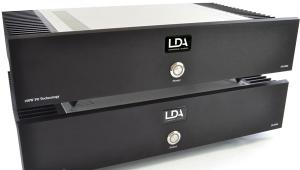

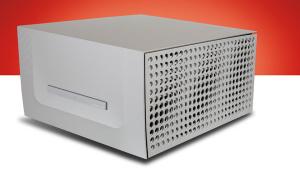

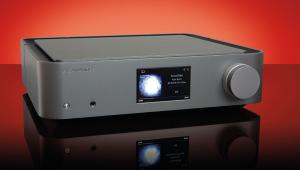
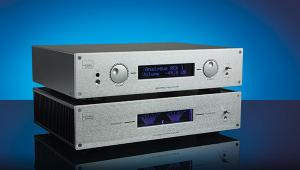

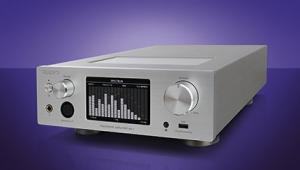
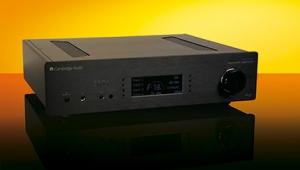


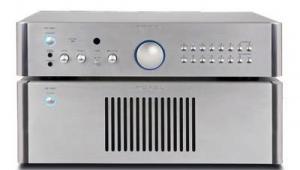
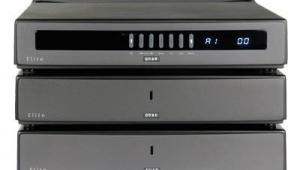

































.jpg)



